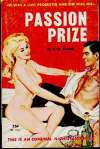The Hacker Ethic
From Steven Levy’s Hackers: Heroes of the Computer Revolution (Penguin Books: 2001): 40-46:
Still, even in the days of the TX-0 [the late 1950s], the planks of the platform were in place. The Hacker Ethic:
- Access To Computers — And Anything Which Might Teach You Something About The Way The World Works — Should Be Unlimited And Total. Always Yield To The Hands-On Imperative!
- All Information Should Be Free.
- Mistrust Authority — Promote Decentralization. The last thing you need is a bureaucracy. Bureaucracies, whether corporate, government, or university, are flawed systems, dangerous in that they cannot accommodate the exploratory impulse of true hackers. Bureaucrats hide behind arbitrary rules (as opposed to the logical algorithms by which machines and computer programs operate): they invoke those rules to consolidate power, and perceive the constructive impulse of hackers as a threat.
- Hackers Should Be Judged By Their Hacking, Not Bogus Criteria Such As Degrees, Age, Race, Or Position. This meritocratic trait was not necessarily rooted in the inherent goodness of hacker hearts–it was mainly that hackers cared less about someone’s superficial characteristics than they did about his potential to advance the general state of hacking, to create new programs to admire, to talk about that new feature in the system.
- You Can Create Art And Beauty On A Computer.
- Computers Can Change Your Life For The Better.
- Like Aladdin’s Lamp, You Could Get It To Do Your Bidding.
 Here are some of the ones I liked: Women’s Doctor. Chinese Lover. Come Sin With Me. Studio Apartment. Musk, Hashish and Blood.
Here are some of the ones I liked: Women’s Doctor. Chinese Lover. Come Sin With Me. Studio Apartment. Musk, Hashish and Blood.